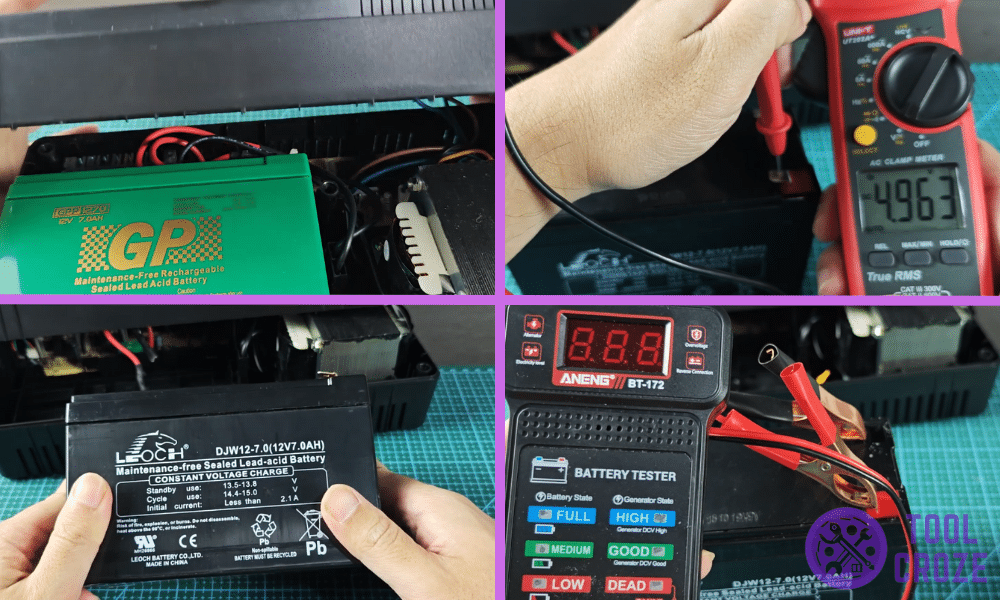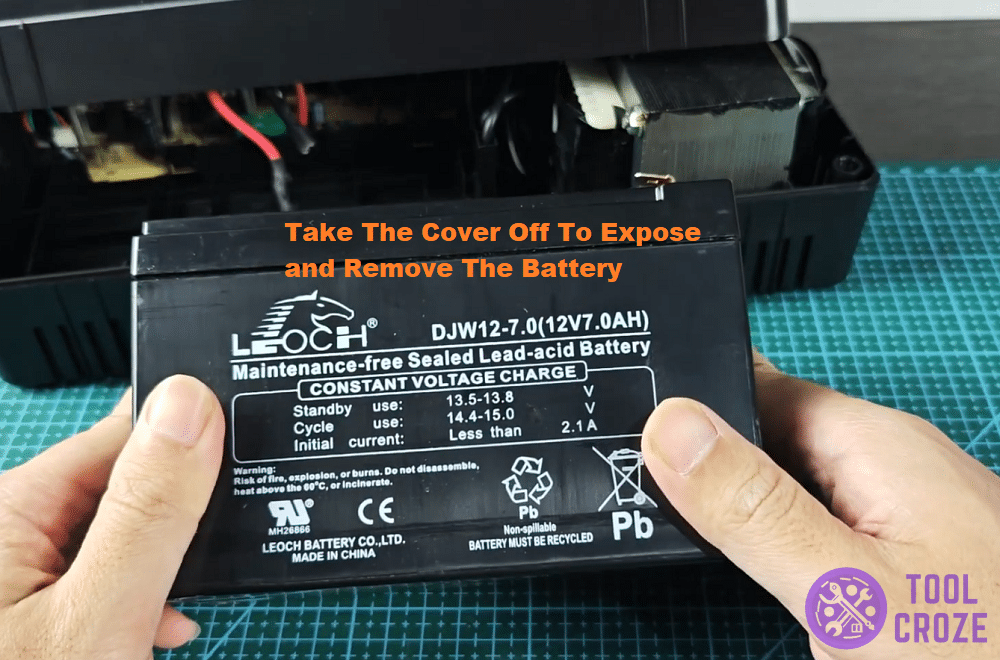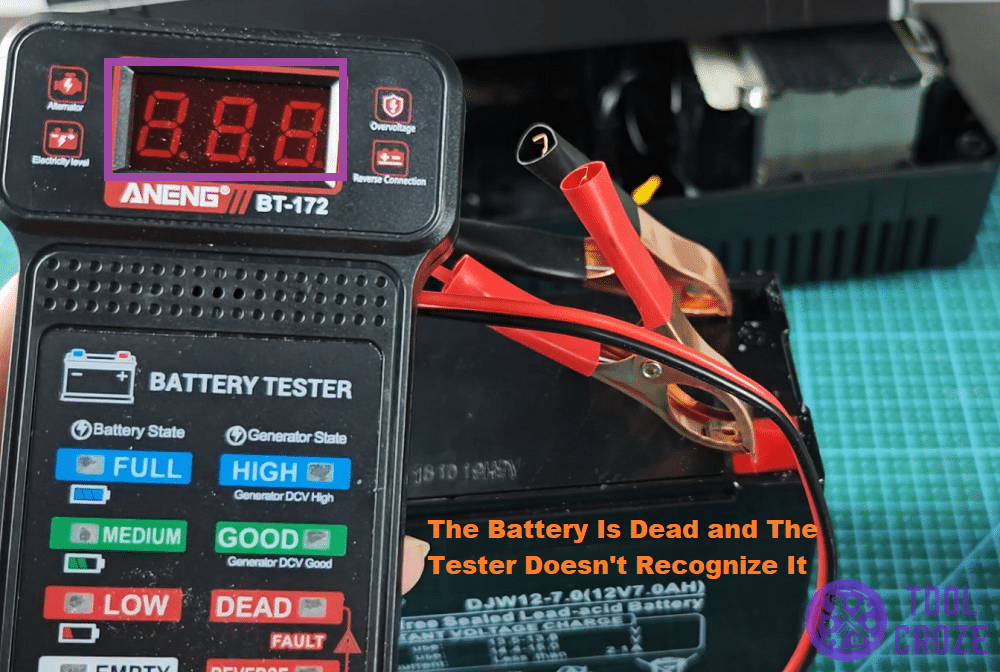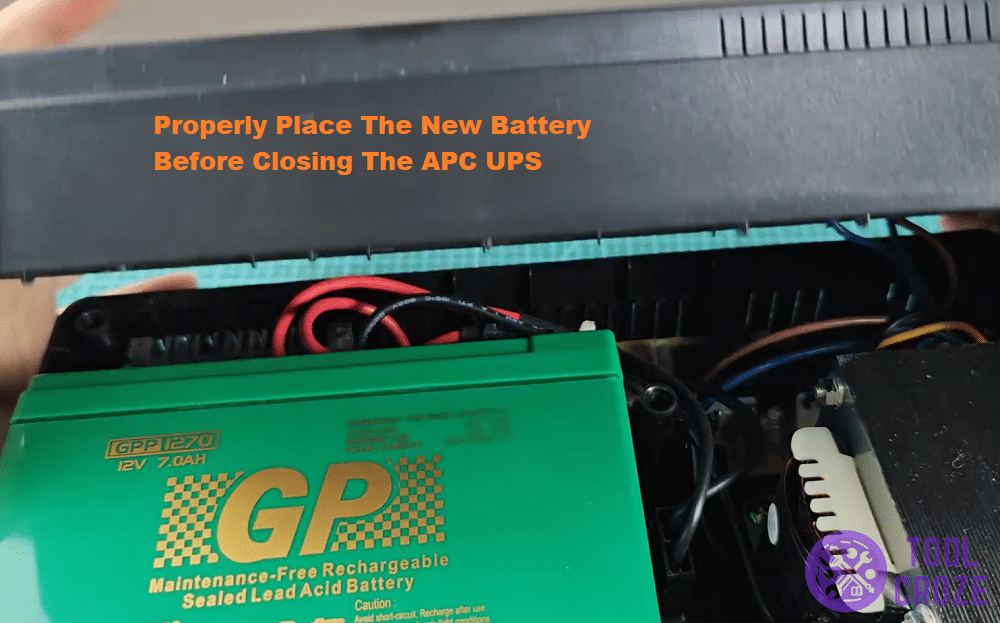
I know I am not the only one who runs into issues with frequent power outages. Even if you don’t have any specific power-related issues, a backup battery will give you a ton of flexibility.
Like, I always recommend units like APC battery backup when it comes to remote access to power.
Even when there is power, I’ll just plug my phone and a few gadgets to it when i don’t have direct access to a power outlet.
However, things got complicated when I tried to turn it on today. It just won’t respond or charge when I pressed the power button.
Read: APC Battery Backup Beeping Continuously
Fixing A APC Battery Backup That’s Not Turning On or Charging
Before anything, I looked over my APC battery unit thoroughly. I thought that there might be some hardware damage that landed me in this awkward situation.
However, I spend 10 minutes inspecting the unit externally and found no issues.
So, I ditched this plan and decided to look at the internal hardware by removing my battery’s covers. I had a hunch that there might be something wrong with its battery.
Checking Everything Inside the APC Battery Unit
The tricky thing about the internal units is that they might look perfect even when they are defective. So, I knew I can’t trust the physical appearance of the battery.
I looked at the wiring as well as the connectors. Both the wiring and the connectors were untouched.
From there, I thought that the connectors might be lose but that wasn’t the case either. At this point, the only remaining problem was the battery.
While even the battery was in perfect shape, I still decided to check its voltage.

Checking the Battery
I separated battery connectors to remove the battery component from the unit. When I examined it, it looked perfect to my eyes. However, I knew I can’t just rely on the looks.
A multimeter became my tool to verify my suspicions by measuring the voltage of the original battery. It provided only 5V according to my tests which established that something was seriously damaged.
A normal functioning APC battery should measure 12V but the major red flag appeared when voltage reached only 5V.
Replacing the Faulty Battery
I proceeded to change the battery because it proved to be the primary reason for equipment malfunctions. I tested the newly bought battery as soon as I received it before proceeding with installation.
I was happy to see that this battery was showing 12 volts on the multimeter and also showed signs of life on the battery tester. This meant that I won’t have to worry about running into the same issues for a long time.
Now, just to be extra sure, I checked the old battery with the battery tester and there was no response. So, i was sure beyond a doubt that I should just get rid of the old battery now.

Installing the New Battery in APC Battery System
It doesn’t take a rocket scientist to install a new battery in the APC system. All you must do is to fix the connectors properly and then secure the battery before closing the casing.
A common mistake that most people make here is that they will just install this battery and not secure the connectors properly.
Moreover, they will even leave some gunk left on the connectors. This situation is a recipe of disaster, and you’ll just run into more issues down the road.
Once the installation is finished, you can go ahead and close up the APC battery backup system and ensure that all the screws are tight. Now, you can proceed with the testing phase.

Testing the UPS
I had good hopes about this new battery and somehow knew that I would be in the green. So, with these hopes, I pressed on the power button, and voila! the UPS activated without delay.
The internal hull of components started operating while all indicator lights were activated.
The APC battery backup successfully recovered its operational capabilities to charge and operate as a backup electricity source.
Then, place the replacement into the space left by the old one. Use the pliers to attach the black wire to the negative terminal first. Then attach the red wire to the positive terminal.
They should wiggle on snuggly. Make sure all the connections are secure. Any loose wiring can lead to safety risks or performance issues down the line.
After that, close the cover and tighten all the screws into place.

The primary reason behind a non-functional APC battery backup is typically the battery itself.
The first step to solve APC unit charging and power problems is to uncover the battery cell and measure its voltage.
Conclusion
Changing a dead battery fixes the system by restoring its complete operational features.
Now, even though my first thought was to get a new battery backup system, just changing the battery saved me a ton of money.
Still, if you’re unlucky and can’t seem to get yourself out of this situation after replacing the battery, then you need to call it a day and get a replacement.

